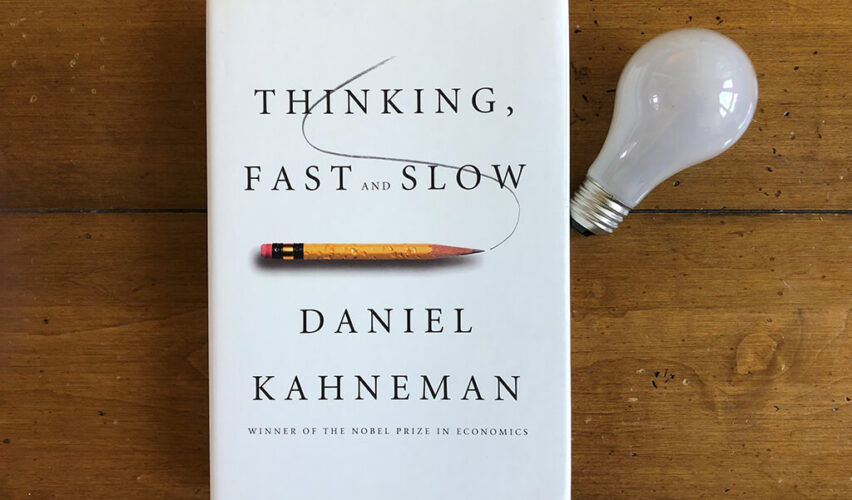The book from Daniel Kahneman “Thinking Fast and Slow” is a masterpiece. A book full of insightful recipes to deal with private and public life in a more rational manner.
Few weeks after going through the nobel prize’s work, on Dec, 2th 2015 we were speaking at the “Smart cities for smart businesses” event in Córdoba (Spain). There, we presented some of our latest ideas on public policies for urban innovation. Specifically, we were advocating for more progress towards data sharing agreements between the key urban players that allow to place urban big data at the service of building sustainable engines of social and economic value.
Unexpectedly, the afternoon debate sparked an intense discussion about what the city of Córdoba could do to speed up its transition to a knowledge-based economy. We were fortunate to witness such an inspiring debate between some of the innovation stakeholders of the city: universities, entrepeneurs, researchers and City Council on the assets and opportunities that lay ahead of Córdoba’s desire to seize a more innovative future.
False clichés in public policies
Having read recently the book by Daniel Kahneman “Thinking Fast and Slow”, our contribution was targeted at dismantling some of the false clichés that might slow or paralyze such a necessary process.
First, don’t ask the city council to lead the way, but to enable and join efforts with the talent community. The fact is that city councils’ finances are exhausted and they barely can deal with city operational needs. It is not a lack of political will, it is the reality drawn by years of crisis and declining human and financial resources.
But you sure can ask the city council to take risks, and here is why: organizations (and, especially, public institutions such as city councils) are risk averse, which is not surprising given that risk aversion is deeply rooted in our brains.
As noted by Kahneman there are many examples in which risk aversion manifests. Take, for instance, a gamble in which we are given 200$ if we win or are taken 100$ if we lose. Under these circumstances, a rational choice would be to reject the gamble, since the prospect of losing 100$ is stronger than the prospect of winning 200$. Many of us would even reject the gamble even if probabilities, instead of being 50/50 are, say, 40/60.
The cost of risk aversion
But the scenario changes if we are given twenty of these gambles in a row. A rational person knows that, statistically, we would end up winning. However, neither people nor organizations tend to consider risk policies as a series of decisions along time; on the contrary, risk assessment focuses too often on individual choices or operations.
But Kahneman shows that if potential earnings are bigger than potential losses then the most rational strategy is to take the risks even in 50% gambles (this, of course, does not exclude adopting risk mitigation policies). In cases where the probabilities of winning are greater than 50% and the reward in case of earning is greater than the loss in case of failing, not adopting innovative policies may cost public institutions large amounts of tax dollars.
Therefore, risk taking public policies are economically rational, while risk aversion is an expensive path towards stagnation and, ultimately, decline.
Planning in the era of complexity
Therefore, and because of this intrinsic uncertainty, long-term plans, in their traditional sense, are overrated. And so are classical project methodologies such as the well-known “waterfall” methodologies. These go: plan → design → implement → operate, in a sequential (and probably slow) order. As such, they don’t cope well with the increasing complexity of the networked society we are living in.
They don’t fit either in a world in which global phenomena leave an immediate local footprint.
So it’s better to plan instead for flexibility, resilience, swiftness, and agility. Unfortunately, you will probably still need a plan to apply for external funding sources. The minimum planning you need is a plan that sketches the creation of the appropriate conditions for innovation and creativity to happen. We do not need strict guides but, rather, enabling conditions.
Planning with too much detail will only impose additional delays in starting the actual work, and might cause to lose trains and opportunities. Modelling is gloomy temptation for classical engineers, but attempting to model complexity might not be worth the effort. Other engineers, those behind the most innovative digital industries, use iterative trial and error methods instead.
These techniques, based on agile methodologies and lean start-up thinking, may prove very efficient for designing cities.
The power of places
The next tip is not Kahneman’s but Mitchell’s, but is equally important. You definitely need to know about the importance of places. Of places open and diverse that gather innovators from different milieus: civic, scientific, entrepreneurial, artistic… Preferably in the urban soil where people can access walking, enter purposelessly and where unplanned encounters can happen.
There are many examples of these places with many different names. We called them urban innovation hubs. In them, weirdos and misfits are most welcome. Innovation hubs, with a touch of flexible, low-cost interior design, can become trendy places that attract external talent. Of course, along time they will also end up nurturing local talent.
Their governance layer should be thin and should encourage risk taking attitudes in their constituents. As the work of Daniel Kahneman “Thinking Fast and Slow” suggest, is the very risk taking characteristic what will make them, in the long run, a powerful economic engine.
Note: originally published inJan, 9th 2015, and updated on January, 2021.
This article is published under a Creative Commons license. Some rights reserved.












